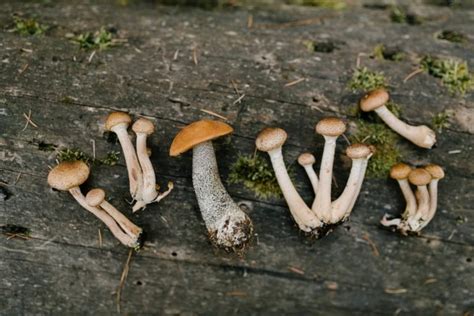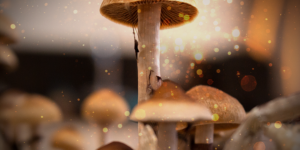The Best Beginner Magic Mushrooms Growing Hacks
Magic mushrooms cultivation can be a rewarding hobby or a profitable venture. With the proper knowledge and tools, you can produce a bountiful harvest of these tasty and nutritious magic mushrooms. This blog post reveals the top 8 hacks for successful magic mushrooms growing, helping you enhance your yield and enjoy the process by preventing headaches that can happen along the way.
Magic mushrooms cultivation is as much an art as it is a science. With these magic mushrooms-growing hacks, you’re on your way to a successful harvest.
1) Speed Hacking for Turbo Growth:
Mushroom cultivation isn’t a race; the growing process requires patience and careful observation. From the initial stages of inoculation to the final harvest, the entire lifecycle of a mushroom can span several weeks or even months, depending on the species. It takes time for spores to germinate and for mycelium to colonise the substrate. Don’t rush the process.
While there’s no magic shortcut to significantly speed up mushroom growth – as it’s a natural process that largely depends on the specific mushroom species and its growing conditions – there are a few strategies you can use to optimize and quicken the mushroom growing process.
– Optimal Conditions
Maintaining the optimal temperature, humidity, and light conditions for your specific mushroom species can maximize growth rate. Ensuring these conditions from the start can lead to quicker and healthier mycelial growth, which in turn can lead to quicker fruiting.
– Nutrient-Rich Substrate
A substrate that’s rich in nutrients can provide the mycelium with the energy it needs to grow more quickly. Some mushroom cultivators add supplements like bran or coffee grounds to their substrate to boost its nutritional content.
– Liquid Cultures
Using a liquid culture can speed up the colonization process. In a liquid culture, the mycelium is suspended in a nutrient-rich solution, which can encourage faster growth than on a solid substrate.
– Proper Aeration
Providing plenty of fresh air exchange can help the mycelium metabolize faster, which can in turn, speed up growth. Be careful though, as too much fresh air can dry out your substrate.
– Strain Selection
Some strains of mushrooms naturally grow faster than others. If speed is a priority, consider choosing a fast-growing species like oyster mushrooms.
2) Get Free Expert Help:
We have a live chat where you can ask anything you would like and be connected with a member of our team. We have expert mycologists here to help you with any questions you may have. The ‘shroom community is very friendly, and everyone is always happy to help.
The mushroom-growing community also has some excellent resources, with thousands of informative blog posts and message boards where you can interact and learn more about magic mushroom cultivation. This information is all free
3) Optimize Your Substrate for Max Yields:
Magic mushrooms feed on the substrate you plant them in. Different mushrooms prefer different substrates, such as straw, wood chips, or compost. Adding supplements like gypsum or coffee grounds can further enhance your substrate to maximize yields. You only need to add a small amount of these ingredients to optimize your substrate for growth.
Use Gypsum to Improve Substrate Structure; adding gypsum to your substrate can improve its structure, making it easier for the mycelium to grow. Gypsum also adds calcium and sulphur to your substrate, which can enhance mushroom growth.
Using spores to inoculate a kit works well and provides excellent results, but it is significantly slower than using a liquid culture or agar. LC and agar are much more powerful and precise and give you more control. They allow you to grow larger crops compared to the traditional spore inoculation due to the growth of rhizomorphic mycelium. It also allows you to isolate genetics that you wish to breed and grow massive flushes every time.
4) Optimize Your Growing Environment:
Magic mushrooms need the right balance of light, temperature, and humidity to grow. Most mushroom varieties prefer indirect light, cool temperatures, and high humidity.
Knowing exactly when you need to change temperature, add moisture and when you need to harvest a flush can make the difference between an average flush and a perfect flush. During the fruiting stage, the magic mushrooms can grow at different rates; picking the ripe mushrooms before they open will prevent the smaller pins from being covered in spores, inhibiting them from getting the light and moisture they need to grow.
– Temperature Control
Different mushroom strains have other temperature preferences for both mycelial growth and fruiting. Using a simple thermometer, monitor and control the temperature of your growing area. In cooler climates, a heating mat or a space heater can be used to maintain optimal temperatures.
– Humidity Regulation
Mushrooms require high humidity to grow. Humidity levels can be increased by misting the growing area with water, using a humidifier, or creating a humidity tent with a plastic sheet. A hygrometer, a device that measures humidity, can be a valuable tool in maintaining the ideal humidity range for your magic mushrooms.
– Light Exposure
While magic mushrooms don’t photosynthesis, they do need light to trigger the fruiting process and to guide their growth direction. Natural light is ideal, but if that’s not possible, you can use artificial lights. A simple LED or fluorescent light can work well for this purpose.
– Air Exchange
Magic mushrooms release carbon dioxide as they grow and need fresh air to thrive. To provide adequate air exchange, you can manually fan your grow area several times a day, or for a more hands-off approach, install a fan or use a setup with built-in air vents.
– Substrate Selection
Finally, the type of substrate you use can significantly impact your mushrooms’ growth. Each magic mushroom species prefers a certain type of substrate – for example, oyster mushrooms prefer straw, while shiitake mushrooms prefer hardwood. Using the right substrate for your chosen magic mushroom species will provide them with the nutrients they need to grow optimally.
5) Contamination Prevention:
There is nothing worse than spending weeks of your time, only to end up with a bag of mould. Magic mushrooms are susceptible to contamination from bacteria, moulds, and other fungi.

The basic principles of contamination prevention are to keep your growing area clean and always wash your hands before handling your magic mushrooms or magic mushrooms growing supplies. If you spot any signs of contamination, such as unusual colors or odors, remove the affected substrate immediately to prevent it from spreading.
Here are some more hacks to prevent contamination, one of the most common challenges in magic mushrooms cultivation:
– Glove Box or Still Air Box (SAB)
Building a glove box or a still air box can provide an isolated and sterile environment for working with your magic mushrooms. This can greatly reduce the risk of airborne contaminants coming into contact with your substrate or cultures.
– Laminar Flow Hood
A Laminar Flow Hood is the cornerstone of any mycology lab. This device helps to create a sterile workspace by filtering out airborne contaminants. While a professional laminar flow hood can sometimes be costly, it is worth the money if you want to set up a serious mycology or growing operation.
Optionally if you are looking to save a little bit of money and have the time, you can build your own laminar flow hood.
– Proper Sterilization Techniques
Invest in a good pressure cooker for sterilizing your substrates and tools. For items that can’t withstand high heat, a 10% bleach solution or 70% isopropyl alcohol can be used. We always recommend using 70% isopropyl alcohol as it is the king of sanitizers.
– Antifungal and Antibacterial Additives
Consider adding natural antifungal and antibacterial agents to your substrate, such as garlic or turmeric. However, use these sparingly as they can also inhibit mycelium growth if used in excess.
– Regular Clean-up
Set a regular cleaning schedule for your magic mushrooms growing area. This includes wiping down surfaces with a disinfectant, cleaning air filters, and disposing of any spent substrate or failed cultures promptly.
6) Don’t Wait Around – Act Fast!:
Inoculating your mushroom grow kit or spawn as soon as possible– Over time, the kit will begin to dry out, and the substrate will become less optimal for sustained mycelium growth. Remember, it is a living organism, and the fresher the kit, the higher your chance of success is. A fresh kit will be superior in every way to a kit that has sat in your cupboard for the last few months.
Purchasing everything you need before you start will hugely improve your chances of a successful grow. Forgetting an essential item can ruin a kit you spent weeks cultivating, whether it’s as simple as a mister or a premium item like an incubator. Mushrooms thrive with consistency, and your kit will produce great results – providing it has everything it needs. I have created a checklist below to get you started.
7) Implement CO2 Management Techniques:
High levels of CO2 can inhibit mushroom fruiting and lead to long, skinny stems. Regularly fanning your mushrooms or using a setup with a CO2 exhaust can help maintain optimal CO2 levels.
Carbon dioxide (CO2) management is crucial in mushroom cultivation, as it significantly impacts the growth and development of your mushrooms. Most mushroom species prefer lower levels of CO2 during the fruiting stage, as high CO2 levels can inhibit the formation of fruiting bodies and result in long, thin, leggy stems.
Regularly fanning your mushrooms or manually airing out the grow room is a simple way to maintain optimal CO2 levels, but this can be labour-intensive and inefficient in larger commercial grows.
For larger-scale operations, smart systems can be deployed that monitor and control the CO2 levels in your grow area. Automated CO2 exhaust systems and CO2 scrubbers are examples of smart devices that regulate and reduce high CO2 levels, creating an ideal environment for your mushrooms to thrive.
8) Using the Right Genetics:
Different magic mushrooms varieties have additional growing requirements. Some magic mushrooms, like button mushrooms, are great for beginners, while others, like shiitake or oyster mushrooms, require more specific conditions. Other species, like dung-loving mushrooms, would prefer non wood-based substrates. Research the ideal growing requirements for your chosen variety and try to replicate these as closely as possible.

Your mushroom’s genetics can make or break your cultivation. Here’s how to ensure top-tier quality:
– Strain Choice
Pick a strain that matches your skill level and growing conditions. Some are easier and forgiving, perfect for beginners, while others offer higher yields but demand precision.
– Trusted Suppliers
Get your spores or spawn from reliable suppliers. Good genetics start with high-quality, pure cultures from reputable sources.
– Embrace Diversity
Don’t stick to one strain. Growing a variety of strains enriches your harvest and broadens your cultivation knowledge. Good genetics is the cornerstone of mushroom cultivation. Choose wisely, manage well, and reap the rewards of your harvest.
In conclusion
Growing mushrooms can be complicated, but with these 8 mushroom growing hacks, you can maximize your yields and save yourself from dreaded contaminations. Be sure to follow our easy-to-use guides to get in-depth while referring to this post to eliminate guesswork and maximize you’re understanding and develop your skills to that next level.
If you have questions we have not covered, just reach out to us and one of our mycologists will be happy to help you with your question.

